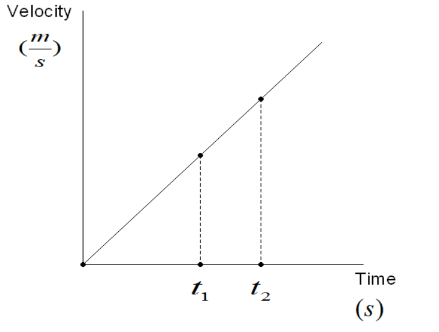Question
Question: Area under a \(v-t\) graph represents a physical quantity which has the unit ?...
Area under a v−t graph represents a physical quantity which has the unit ?
Solution
Velocity is a vector quantity which has magnitude as well as direction while displacement is also a vector quantity which has magnitude and direction while scalar quantities only have magnitude and no direction.
Complete step by step answer:
Area under the v-t graph means the graph is drawn to show the relation between velocity and time.

Velocity is the rate of change of displacement that means change in displacement per unit time.
v=dtds
It can be written as:
ds=vdt
Take both side integral, we get
∫ds=t1∫t2vdt
⇒s=t1∫t2vdt
⇒s=v(t2−t1)
Integration of vdt shows area under v-t graph.
From the above analysis we can say the area under the v-t graph shows displacement. We cannot say the area of the v-t graph shows distance because distance is a scalar quantity and velocity is a vector quantity, so the area of the v-t graph has magnitude as well as direction. It means that the area of the v-t graph shows a vector quantity. The S.I unit of velocity is secondmeter(sm) and the S.I unit of time is second(s).
Unit of the area under v-t graph is ,
area under v-t graph =Velocity×Time
⇒area under v-t graph =(sm)×(s)
∴area under v-t graph =m
Hence, area under the v-t graph shows displacement and its S.I unit is meters.
Note: We should know units of all physical quantities like in the above question we take units of velocity is secondmeter(sm). We should know some basic concepts of integration which are used in the above question.
